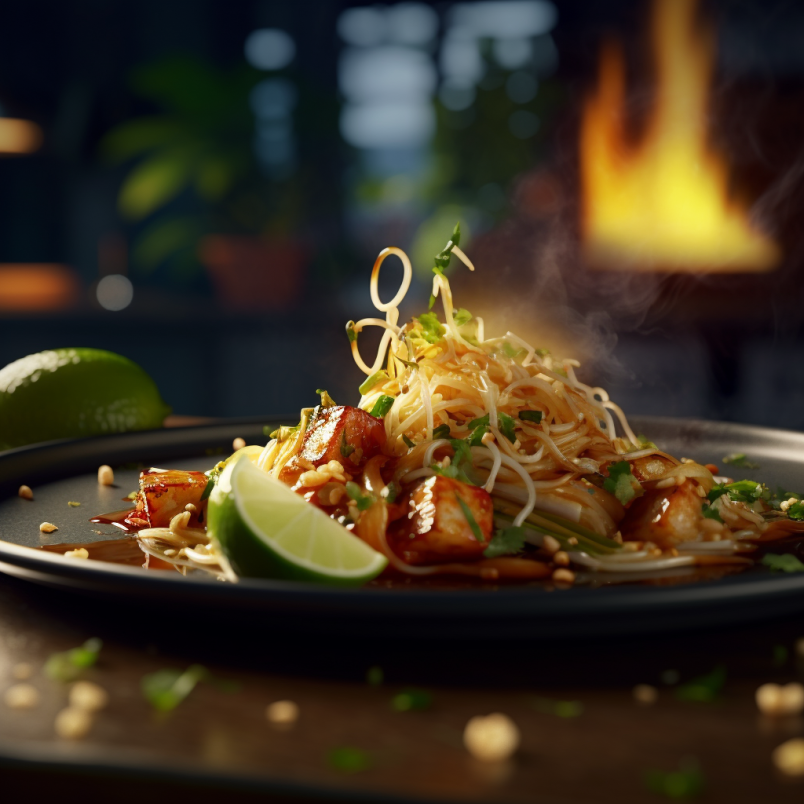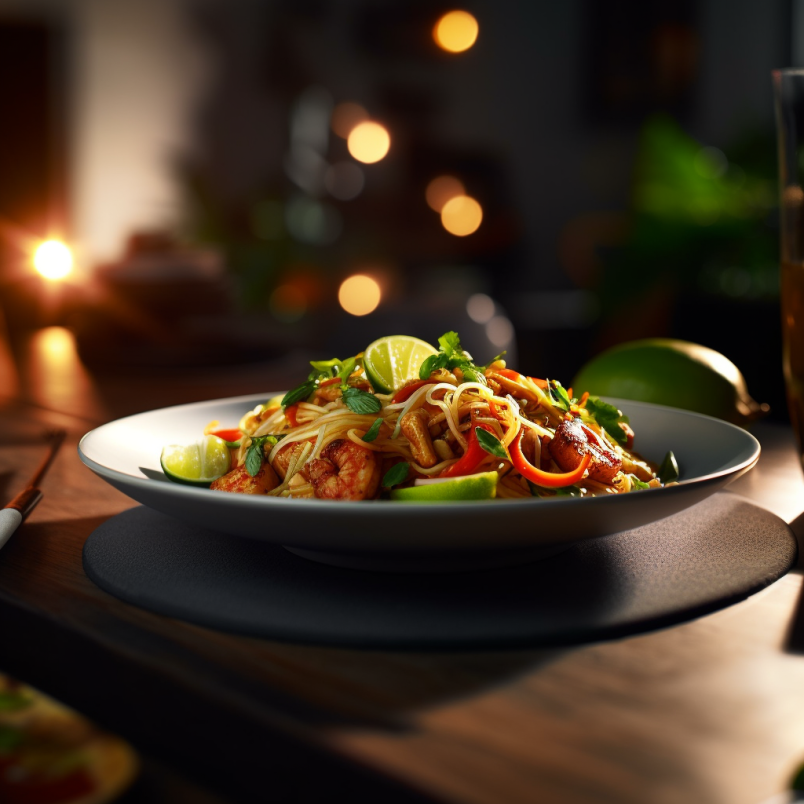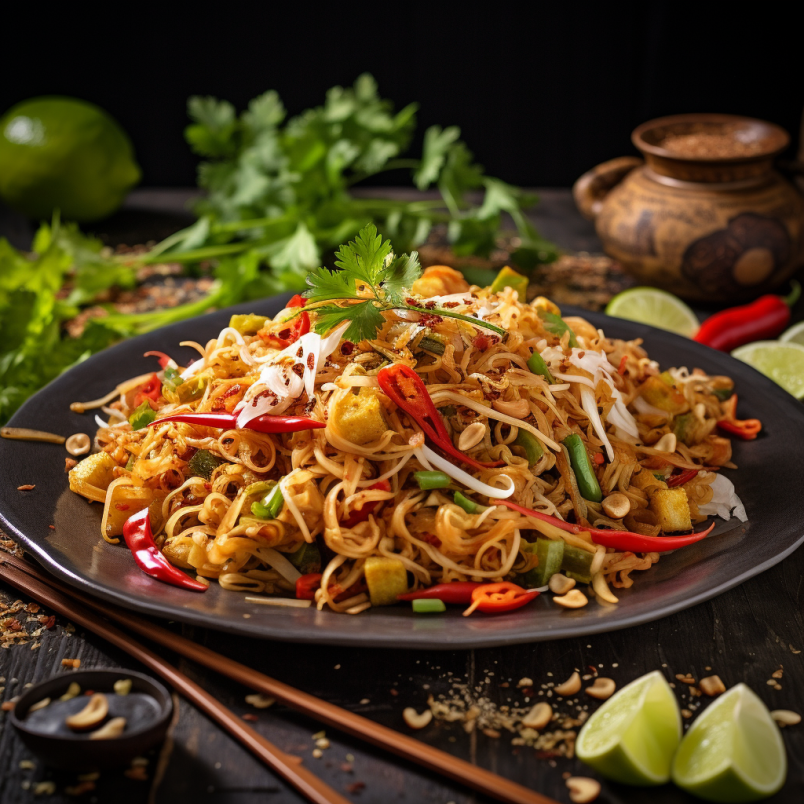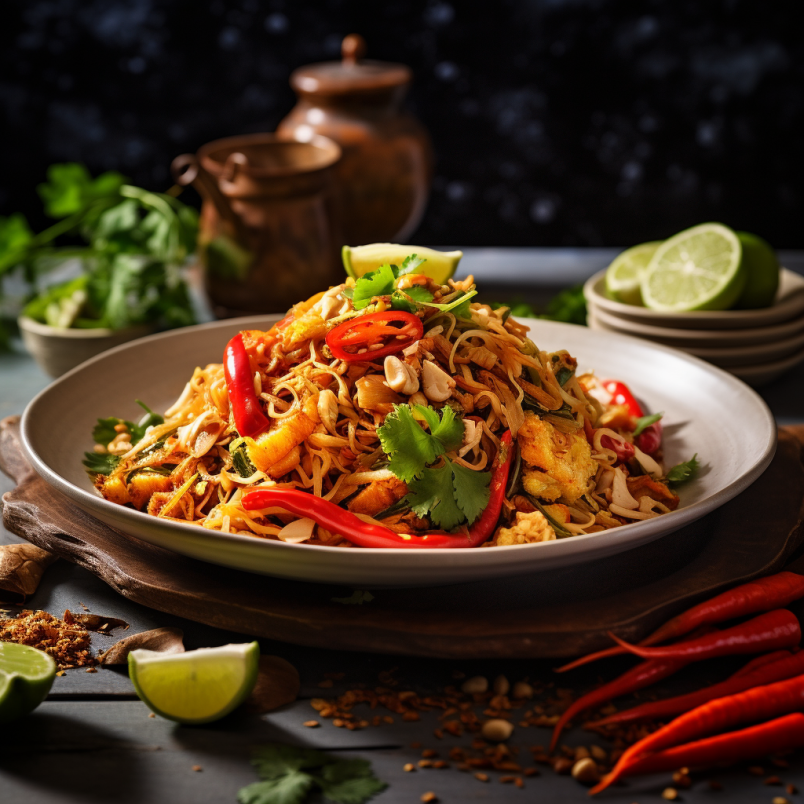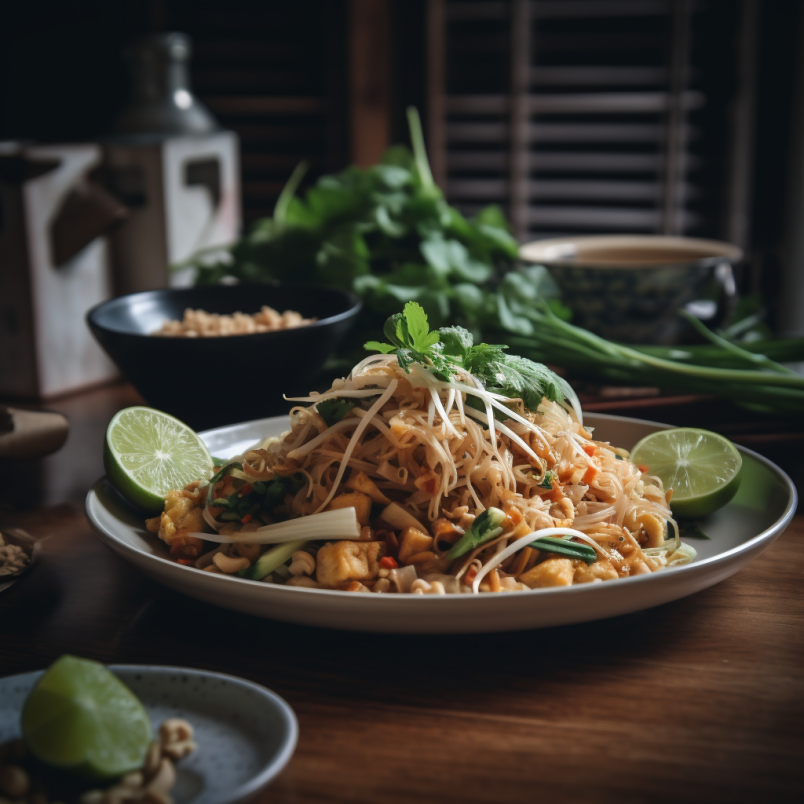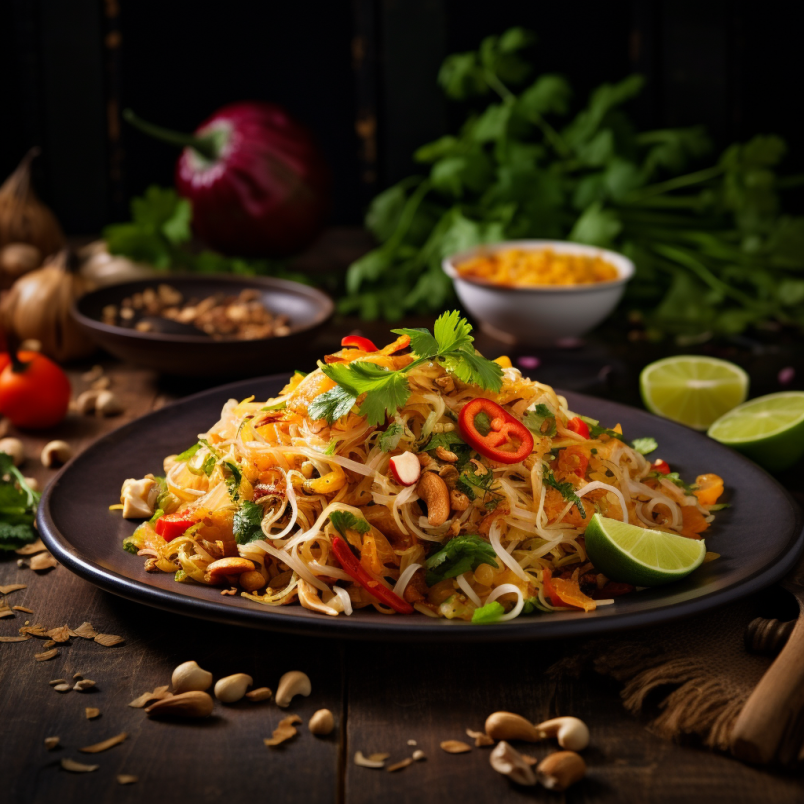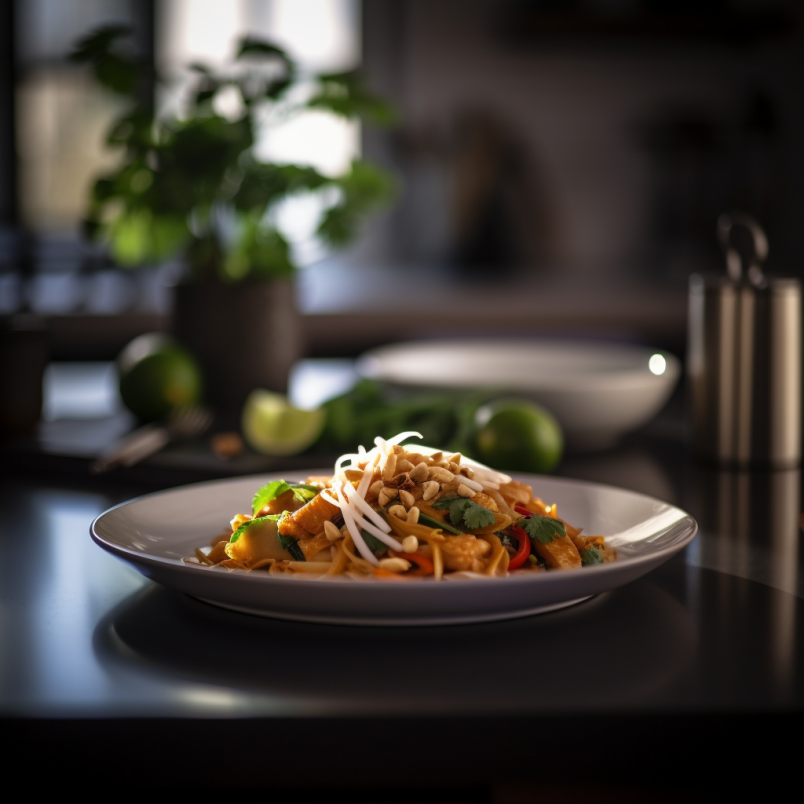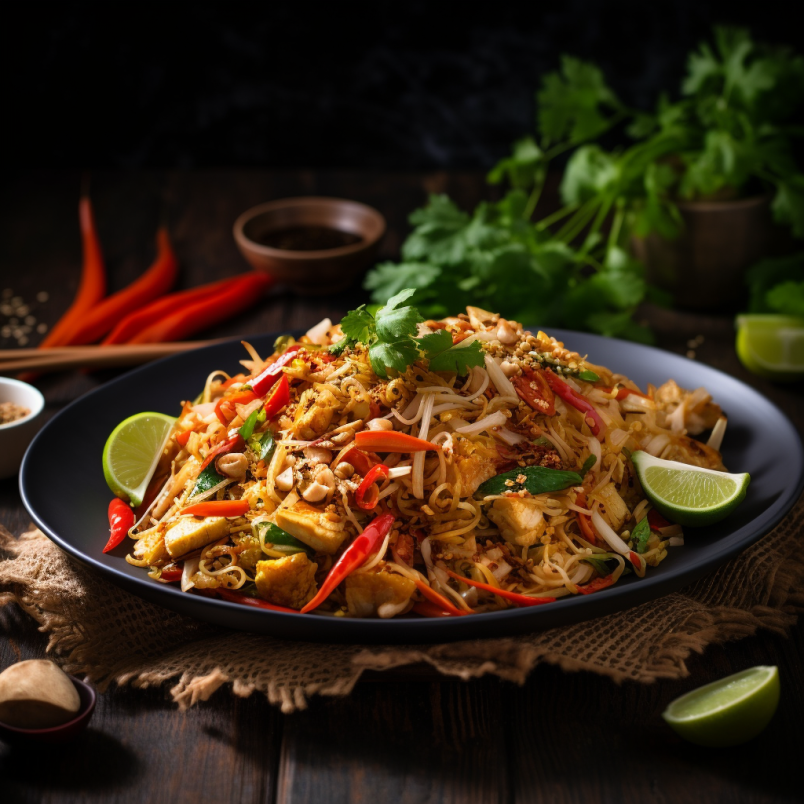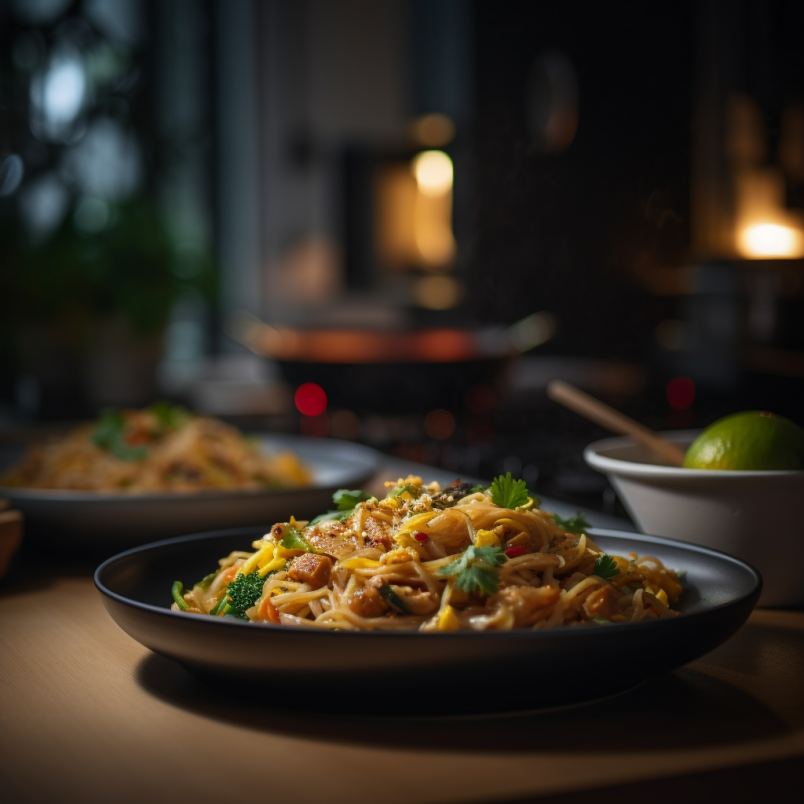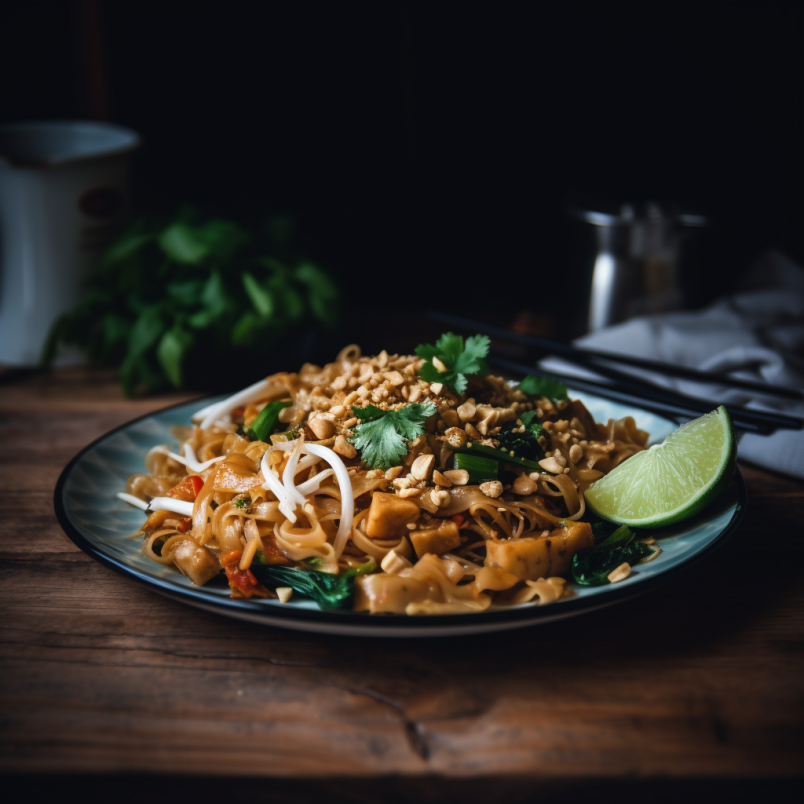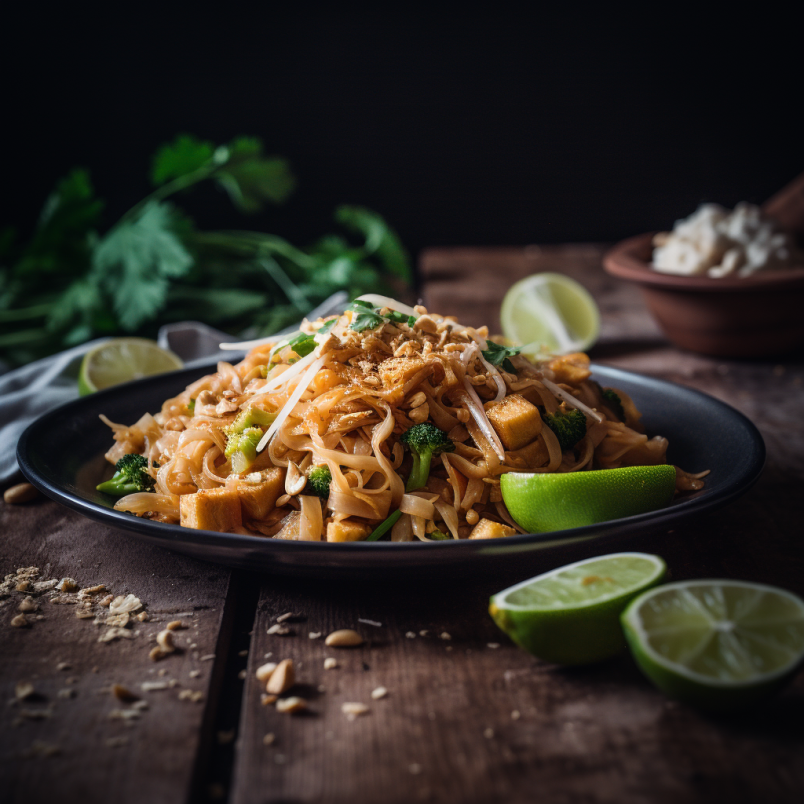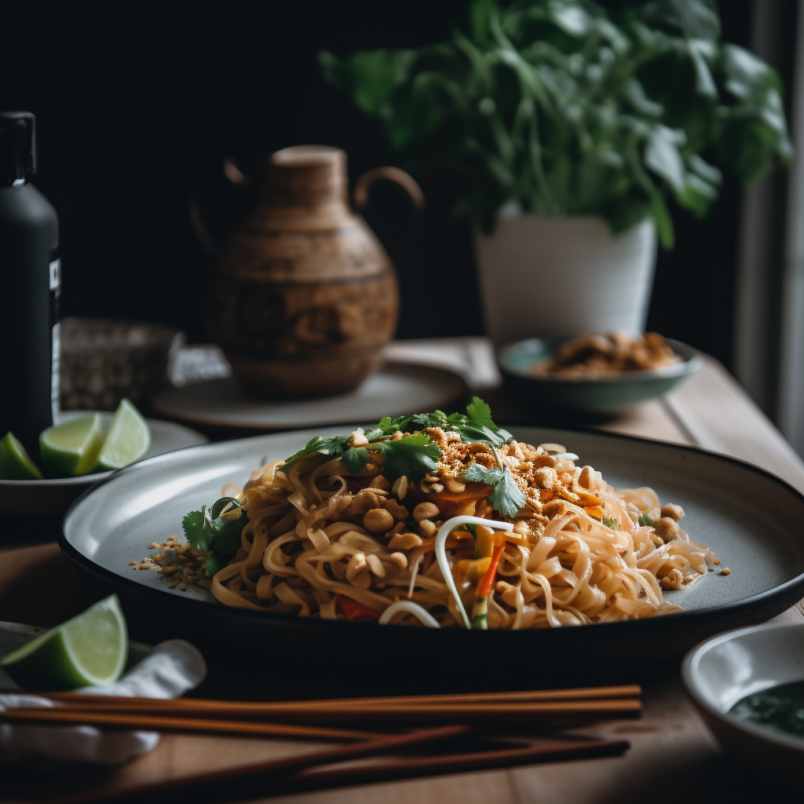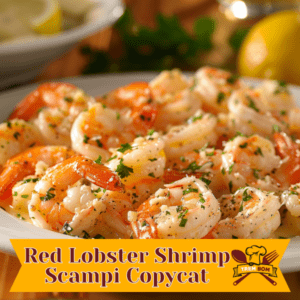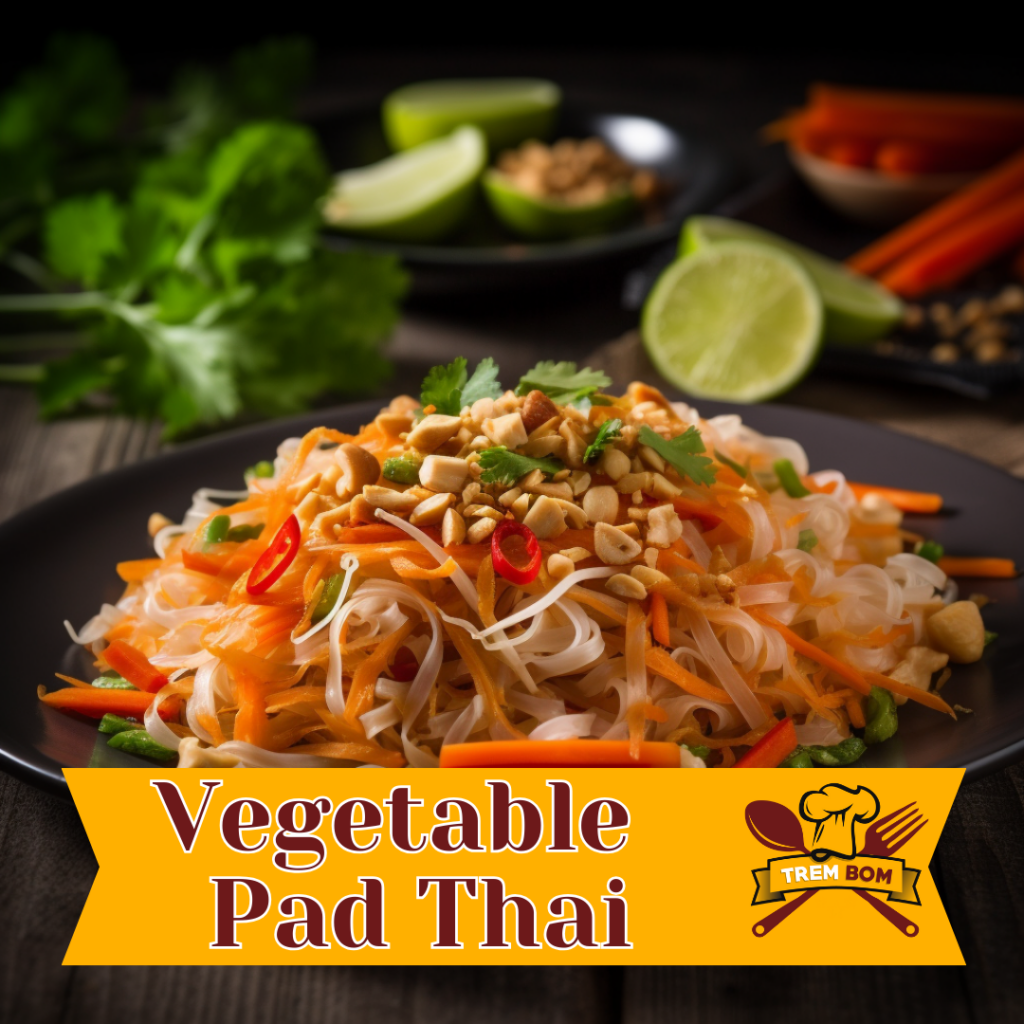
Why Settle for Ordinary When You Can Have Extraordinary?
Hello, dear foodies and culinary adventurers! If you’re a Thai food aficionado or someone who is just dipping their toes into the vast ocean of Asian cuisine, you’re in for a real treat today. I’m about to reveal the secrets to making the most delectable, texture-rich, and elevated Vegetarian Pad Thai you’ve ever tasted. Trust me; this dish will make you question every Pad Thai you’ve had before. Let’s jump right in!
A Personal Journey: The Vegetable Stage and The Power of Pad Thai
Several years ago, I embarked on a culinary and lifestyle journey that many of you might relate to—I went vegetarian. Whether it was a drive to be more conscious of my ecological footprint or an experiment with a new dietary regime, this phase became an eye-opener for me in many ways. While giving up meat wasn’t too difficult, what did become challenging was finding vegetarian dishes that still wowed my palate and left me satiated.
That’s when I stumbled upon the magic of Vegetarian Pad Thai (and its equally glorious cousin, Vegetarian Lo Mein). To say that these dishes were lifesavers would be an understatement. They were not just meals; they were experiences, they were comforts, and they were proof that choosing a vegetarian lifestyle didn’t have to mean a compromise on flavor or satisfaction.
I remember the first time I made this Elevated Vegetarian Pad Thai at home. The aroma of garlic and tamarind wafting through the kitchen was enough to make me feel like I was in a bustling Thai street market. The first bite was transformative—tangy, sweet, spicy, and brimming with textures. The crispy tofu, acting as the perfect protein substitute, brought substance to the dish, while the bean sprouts, snap peas, and red bell pepper brought freshness and crunch.
And let’s talk about that sauce—tamarind for tang, palm sugar for sweetness, and a dash of Sriracha for that kick; it was a symphony of flavors orchestrated to perfection. It was then that I realized how creative one can get with vegetarian cooking. The same story goes for the Vegetarian Lo Mein, another noodle dish that, with its savory sauce and robust vegetables, redefined comfort food for me.
The best part was that these recipes weren’t just “good for vegetarian food”—they were outstanding dishes, full stop. They were meals that I would be proud to serve at a dinner party, confident that they would impress the most discerning of eaters, vegetarian or not.
These dishes carried me through my vegetarian stage with grace, filling my dinners with both nourishment and joy. And while my dietary choices have since evolved, my love for these recipes remains constant. Because good food transcends dietary labels; it’s a universal language of love, comfort, and soul-satisfying deliciousness.
So whether you’re vegetarian, pescatarian, flexitarian, or just an “I-eat-what-makes-me-happy-tarian,” I urge you to give this Elevated Vegetarian Pad Thai a try. Trust me, it’s a game-changer.
Who This Vegetable Pad Thai Recipe is For
This recipe is perfect for vegetarians who are tired of compromising on flavor, people who are health-conscious but unwilling to give up their gastronomic adventures, and of course, anyone and everyone who loves good food. If you’re looking for a straightforward, supremely tasty, and restaurant-quality dish to serve at your next dinner party, this Vegetarian Pad Thai is your golden ticket.
Why This Vegetarian Pad Thai is a Cut Above the Rest
What sets this Vegetarian Pad Thai apart? It’s all in the details: the perfect al dente rice noodles, crispy tofu that’s marinated to perfection, and the tangy-sweet sauce that brings everything together. We’re also upping our garnish game with a crunch of peanuts and a burst of fresh lime. It’s a harmonious blend of flavors and textures that dance in your mouth, making each bite a delightful experience.
Vegetable Pad Thai Recipe Ingredients and Kitchen Equipment: The Building Blocks
Ingredients
For a detailed list of ingredients and their quantities, refer to the recipe card at the bottom of this post.
Kitchen Equipment
- A wok or large frying pan
- A saucepan
- Tongs
- Mixing bowls
- A chopping board
- A good quality knife
- A tofu press or heavy object
- Measuring cups and spoons
Step-by-Step Guide: Unveiling the Secrets to Elevated Pad Thai
I won’t keep you in suspense any longer! Scroll down to the recipe card for step-by-step instructions, including crucial prep work and cooking steps. But first, let’s address some tips and tricks to make sure your Pad Thai is nothing less than perfect.
Tips for Achieving the Perfect Texture and Consistency
- Noodles: Soak your noodles just until they are al dente to prevent a mushy texture during stir-frying.
- Tofu: Pressing the tofu is crucial. This step ensures it will absorb the flavors better and yield a crispier texture.
- Veggies: Stir-fry them until they’re softened but still crunchy, so they contribute to the dish’s texture rather than making it soggy.
Elevate Your Dining Experience: Creative Serving Ideas and Pairings
- Herb Platter: Enhance the flavors by serving your Pad Thai with a side of fresh Thai basil, mint, and additional lime wedges.
- Pad Thai Lettuce Wraps: If you’re aiming for something lighter, serving smaller portions in lettuce cups offers a crunchy twist.
Drink Pairings
- White Wine: A chilled glass of Sauvignon Blanc or Pinot Grigio pairs exceptionally well, cutting through the richness of the dish.
- Beer: A light lager can also be a great companion to this dish, offering a refreshing contrast.
FAQs: Your Questions Answered
Can I make this Pad Thai vegan?
Absolutely, just skip the eggs and make sure you’re using a vegan-friendly “fish” sauce substitute.
What if I can’t find tamarind paste?
You can substitute it with a mix of lemon juice and brown sugar, although the taste won’t be as authentic.
Can I store leftovers?
Yes, store any leftovers in an airtight container in the fridge for up to 3 days. Reheat gently on the stovetop or in the microwave.
Don’t Keep This Gem a Secret!
If this Elevated Vegetarian Pad Thai changes your life (or even just your dinner), don’t forget to share the love. Snap a picture, share it on social media, and tag us. Your culinary success stories are what keep us going!
Also, if you haven’t already subscribed to our high-end food blog, now’s the time. Click that subscribe button to never miss out on more extraordinary recipes and tips.
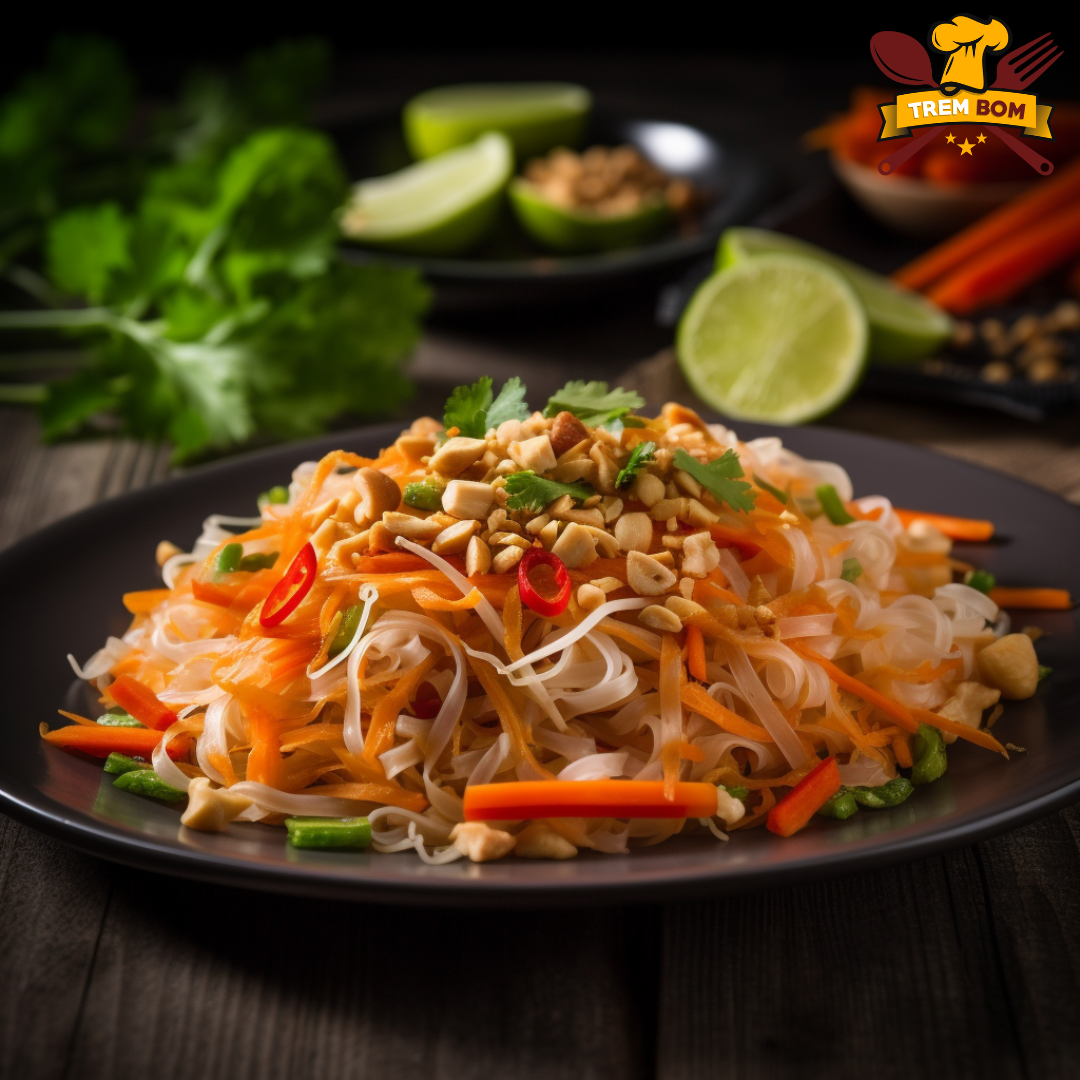
Vegetable Pad Thai
Equipment
- 1 Colander
Ingredients
- 8 oz flat rice noodles Pad Thai noodles
- 1 cup firm tofu pressed and cubed
- 2 cups bean sprouts
- 1 cup shredded carrots
- 1 red bell pepper thinly sliced
- 4 green onions thinly sliced (reserve some for garnish)
- 4 cloves garlic minced
- 1 cup snap peas chopped
- 2 eggs lightly beaten (optional)
- 2 tablespoons vegetable oil
- 1 lime cut into wedges
- Fresh cilantro for garnish
- Crushed peanuts for garnish
- Chili flakes for garnish (optional)
- 1/4 cup tamarind paste
- 3 tablespoons soy sauce or Tamari for gluten-free
- 1 tablespoon fish sauce use vegetarian “fish” sauce for vegetarian
- 3 tablespoons palm sugar or brown sugar
- 1 teaspoon Sriracha sauce adjust to taste
Instructions
- Press the Tofu: Wrap the tofu in a clean kitchen towel and place a heavy object on top. Let it sit for at least 15 minutes.
- Soak the Noodles: Place rice noodles in a large bowl and cover with hot water. Let them soak for 10-15 minutes or until al dente. Drain and set aside.
- Prepare the Sauce: In a bowl, mix together tamarind paste, soy sauce, vegetarian “fish” sauce, palm sugar, and Sriracha. Set aside.
- Stir-fry Tofu: Heat 1 tablespoon of vegetable oil in a wok or large pan over medium-high heat. Add the tofu cubes and stir-fry until golden brown. Remove and set aside.
- Sauté Veggies: In the same wok, add another tablespoon of oil. Add minced garlic, followed by the red bell pepper, snap peas, and shredded carrots. Stir-fry for 2-3 minutes until softened but still crunchy.
- Add Protein and Eggs (Optional): Push the veggies to the side of the wok. Add beaten eggs if using, scramble lightly and mix with the vegetables.
- Combine Everything: Add the soaked noodles and tofu to the wok. Pour the sauce over the mixture.
- Stir-fry: Use tongs to combine all ingredients, making sure the sauce evenly coats the noodles and vegetables. Stir-fry for 5-6 minutes or until the noodles are cooked through.
- Finish with Bean Sprouts: Add the bean sprouts and most of the sliced green onions. Toss to combine for another 1-2 minutes.
- Garnish and Serve: Divide among plates, and garnish with fresh cilantro, remaining green onions, crushed peanuts, and lime wedges. Optionally, sprinkle chili flakes for an extra kick.
- Noodles: Make sure not to over-soak your noodles; they should be al dente before stir-frying to prevent a mushy texture.
- Tofu: Pressing the tofu ensures it will absorb the flavors better and stir-fry to a crispier texture.
- Veggies: Cook until they are just softened; you want them to retain some bite for texture.
- Stir-frying: Keep the heat at medium-high and keep the ingredients moving to get a good sear without burning.
Notes
- Protein: For a non-vegetarian option, you could use shrimp or chicken. If you are vegan, omit the eggs.
- Soy Sauce: Tamari can be used for a gluten-free option.
- Fish Sauce: Use a vegan fish sauce or substitute with additional soy sauce for a vegetarian/vegan option.
- Sugar: Coconut sugar can be used as a healthier alternative to palm or brown sugar.
